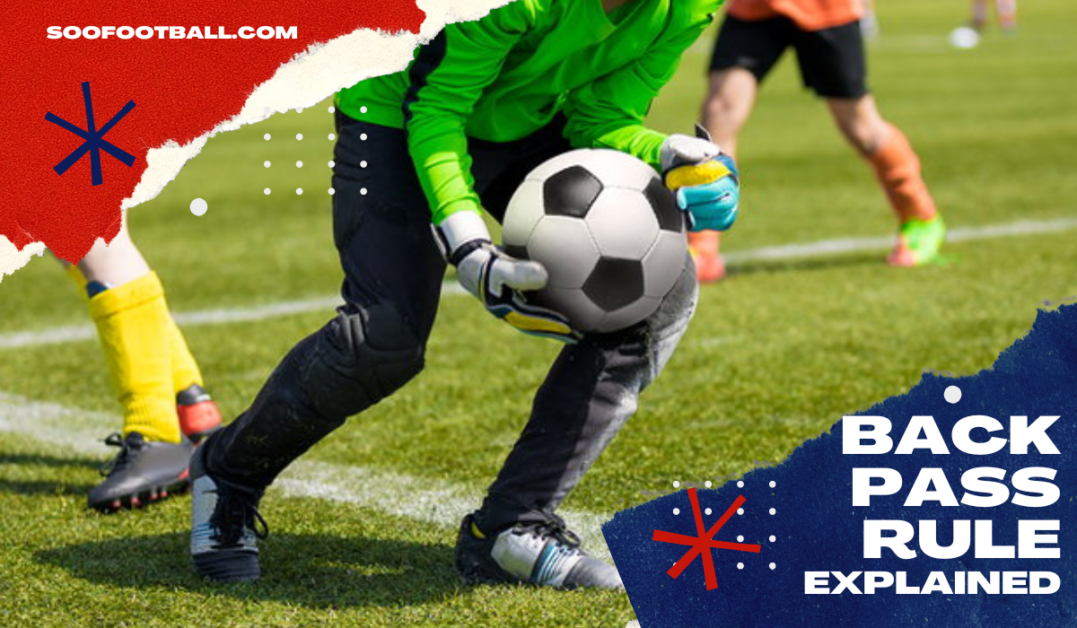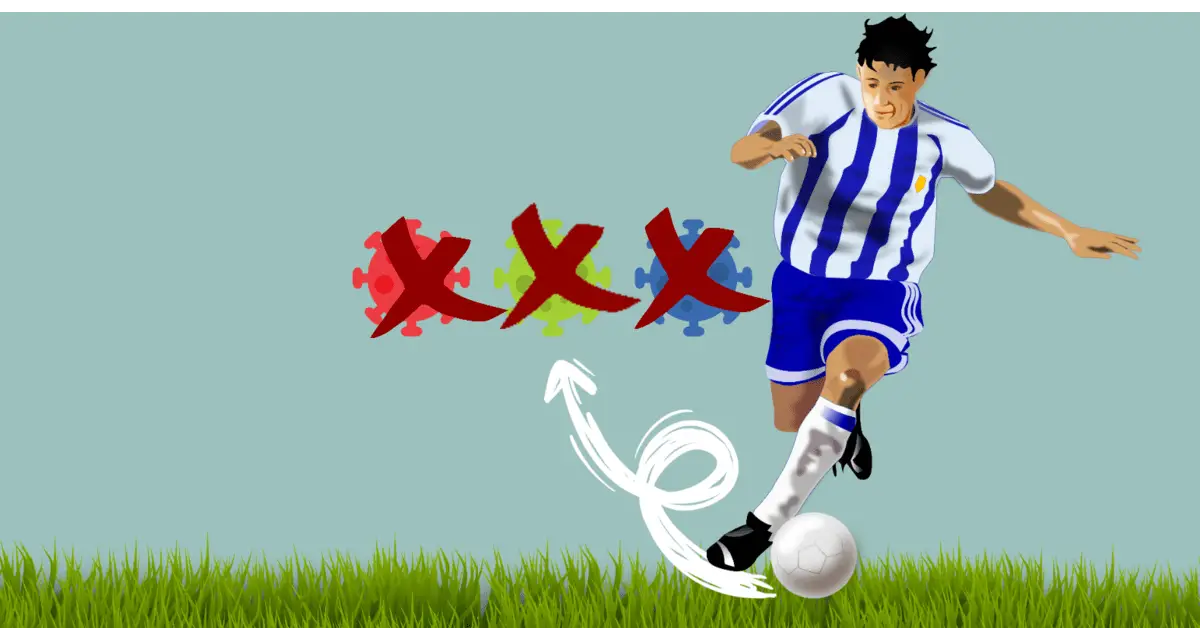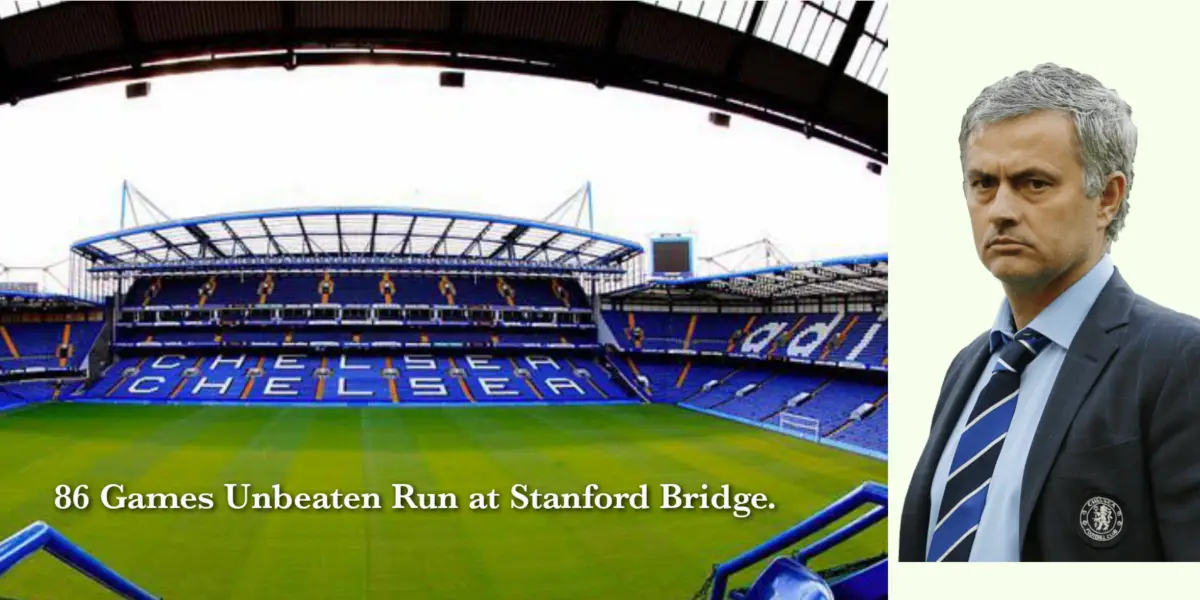If you are ever looking for a comprehensive overview of the back pass rule in football, you are in the right place.
Football, a sport loved and played by millions worldwide, is a game of strategy, athleticism, and precision.
However, it’s not just the goals, assists, and tackles that make this beautiful game fascinating. But also the subtle nuances of the rules that govern it.
One such rule is the back pass rule. The rule has played a crucial role in shaping the modern-day game and continues to challenge players, coaches, referees, and fans alike.
This rule, introduced to encourage attacking play and prevent time-wasting tactics, has been a subject of controversy and debate over the years.
In this comprehensive overview, we delve into the history, interpretation, impact, and enforcement of the back pass rule, uncovering its significance in the sport. Also, we’ll explore how it has evolved to become what it is today.
What is the Back Pass Rule In Football?
The back pass rule in football prohibits goalkeepers from handling the ball if it was deliberately kicked to them by a teammate.
Take note of the key phrase deliberately. That means if the ball deflects off a player to his Goalkeeper, it is not deemed a back pass because it is not deliberate.
However, there are some exceptions as you’d find out next.
Exceptions to the Back Pass Rule
All deliberate passes to the Goalkeeper with the chest, head, and knee are not regarded as a back pass offense.
In other words, Goalkeepers can handles all deliberate passes from their teammates with the head, chest, and knee.
However, a Goalkeeper cannot handle a deliberate pass from his teammate with the feet still.
Common Misconception of the Back Pass Rule In Football
There are several common misinterpretations of the back pass rule in football. This can lead to confusion and controversy on the pitch. Some of these include:
- Handball vs Back Pass: Some players and fans may mistake a handball for a back pass. But these are two separate rules with different consequences. A handball occurs when a player deliberately handles the ball, while a back pass occurs when a player deliberately kicks or heads the ball to their goalkeeper.
- Chest and knee control: Some fans may mistakenly believe that the goalkeeper is not allowed to handle the ball if it was played back to them via a chest and knee. A Goalkeeper can actually handle a pass from a teammate with their chest. But for knees it has to be indelibrate.
- Indirect vs Direct Free Kicks: Some players may believe that a back pass results in an indirect free kick. But this is not always the case. If the back pass is deemed deliberate by the referee, it results in a direct free kick for the opposing team.
It is important for us as fans to understand the correct interpretation of the back pass rule to avoid confusion and controversy.
History of the Back Pass Rule
In this section, we will delve into:
- Origin and evolution of the rule
- Changes to the rule over the years
- Reason for the introduction of the rule
Origin and Evolution of Back Pass
The back pass rule was introduced by FIFA in 1992 to encourage more attacking play and prevent goalkeepers from wasting time by constantly receiving the ball from their teammates. (More on this later.)
Before this rule, goalkeepers could handle the ball as many times as they wanted, even if it was deliberately passed to them by a teammate.
Over the years, there have been some minor modifications to the rule, but the main concept remains the same.
In recent times, technology such as the Video Assistant Referee (VAR) has also played a role in the enforcement of the back pass rule, ensuring that referees have all the necessary information to make the correct decisions.
Changes To The Rule Over The Years
There have been a few changes to the back pass rule since its introduction in 1992 by FIFA.
One notable change was made in 1997. The rule was altered to prevent goalkeepers from handling the ball if a teammate’s throw-in went to them directly.
Another change was made in the 2000s. The change allowed goalkeepers to handle the ball if it was played to them using the head, chest or knee.
However, the rule still prohibits goalkeepers from handling the ball if it was deliberately kicked to them by a teammate.
Reason for the introduction of the rule
The reason for the introduction of the back pass rule in football was to encourage more attacking play and limit time-wasting tactics.
Before the rule was introduced as mentioned earlier, goalkeepers could handle the ball as many times as they wanted, even if it was deliberately passed to them by a teammate. This often led to situations where the goalkeeper would repeatedly receive the ball from their defense, stalling the game and slowing down the pace of play.
The back pass rule was designed to discourage this behavior and force goalkeepers to play the ball more actively, either by passing it to a teammate or playing it out of the back.
By doing this, the rule aimed to create a more dynamic and entertaining style of play. The emphasis was on attacking and scoring goals, rather than slowing down the game and playing for time.
The Impact of the Back Pass Rule on Football
The impact of the back pass rule in football has been significant, affecting the way the game is played and shaping the tactics used by teams. Some of the key impacts of the rule include:
Encourages attacking play
By limiting the ability of goalkeepers to repeatedly handle the ball, the back pass rule encourages teams to play more attacking football.
Teams are forced to look for creative ways to build up play and find opportunities to score. Hence, leading to a more dynamic and entertaining style of play.
Prevents time-wasting tactics
Before the back pass rule was introduced, goalkeepers could waste time by repeatedly receiving the ball from their defense and holding onto it.
The back pass rule helps to prevent these time-wasting tactics, ensuring that the game remains fast-paced and exciting for fans.
Increases pressure on goalkeepers
The back pass rule puts increased pressure on goalkeepers to play the ball out of the back. They do either by passing it to a teammate or playing it up the field.
This requires goalkeepers to have better technical skills. Also, they must as well have good decision-making and situational awareness, to avoid committing a back pass.
Changes team tactics
Teams have had to adapt their tactics in response to the back pass rule. Some opt to play with a sweeper-keeper who is comfortable playing with their feet.
Also, teams may also focus on improving their build-up play and offensive movement to create more scoring opportunities. This seem to be better than relying on the goalkeeper to play the ball out of the back.
Increases fairness
The back pass rule helps to level the playing field. How? It reduces the ability of teams to slow down the game and play for time.
This makes the game fairer for both teams and ensures that the outcome is determined by skill and effort rather than time-wasting tactics.
In essence, the back pass rule has had a significant impact on football. Hence, affecting the way the game is played, shaping tactics, and increasing fairness and excitement for players and fans alike.
Conclusion
The Back rule is one of the most misunderstood rules in football.
However, this article must have put some clarity to the rule.
Further Reading:





